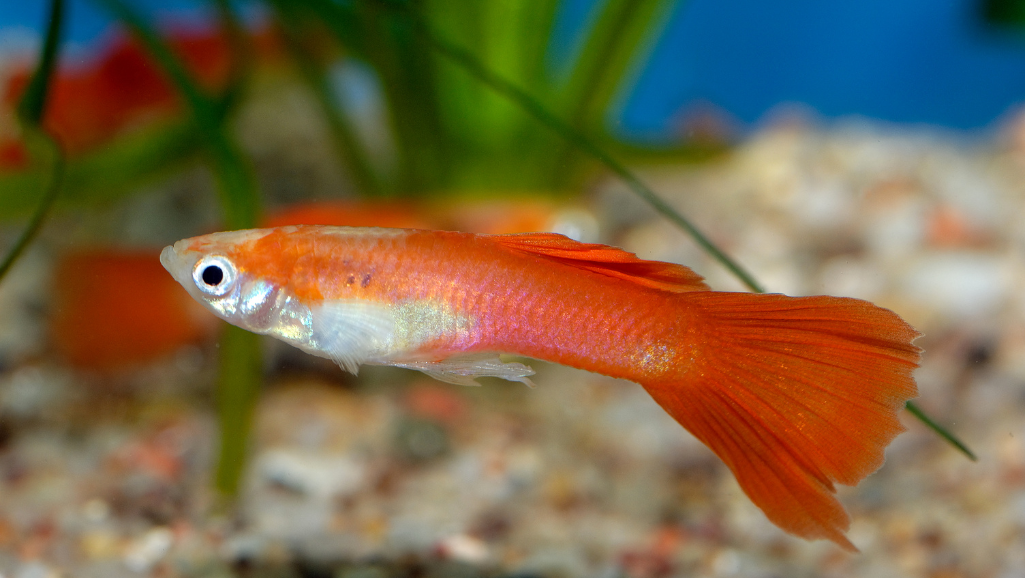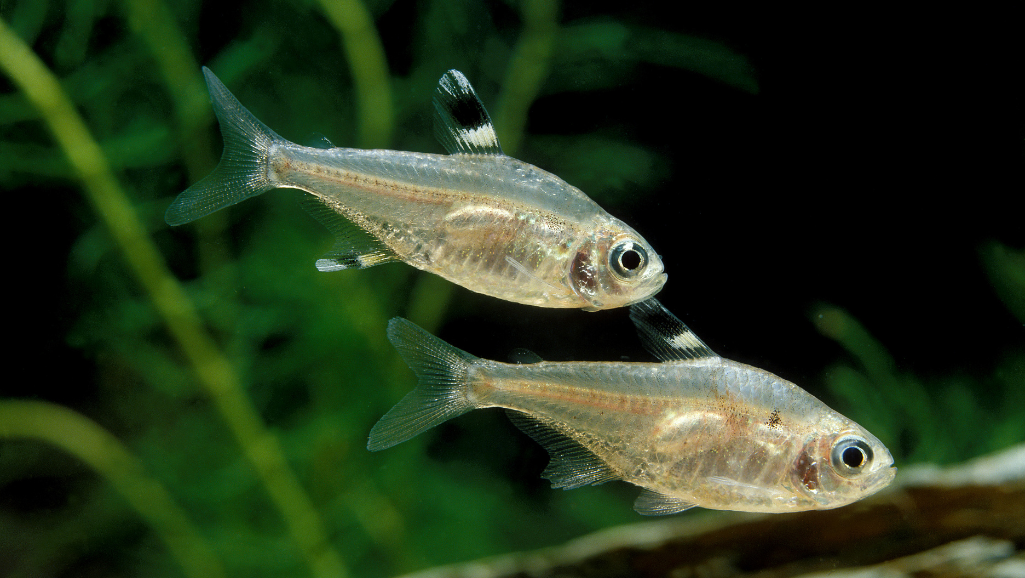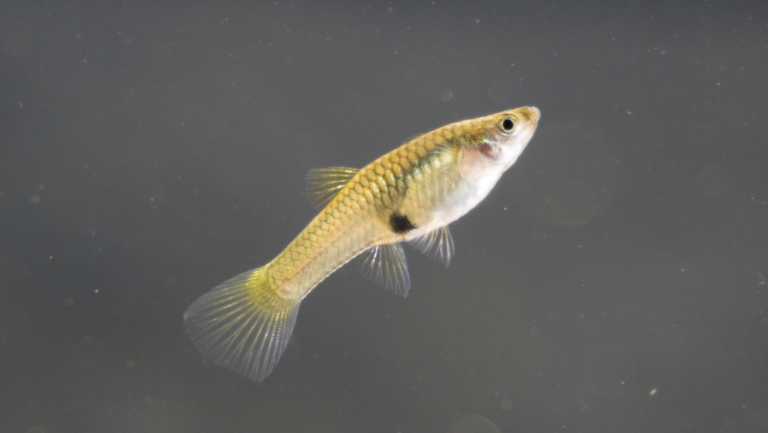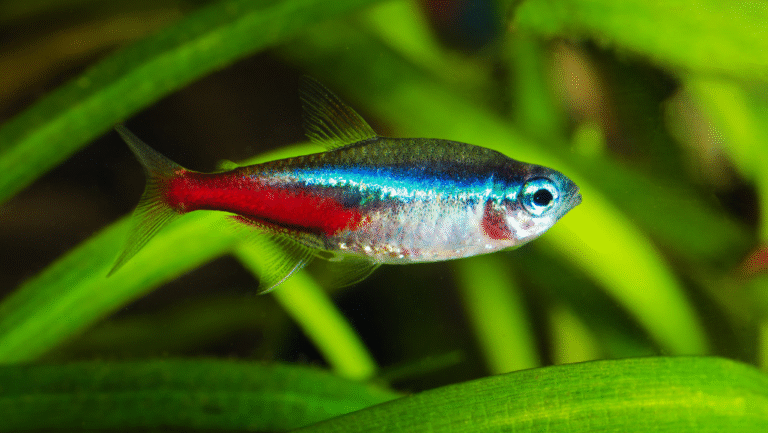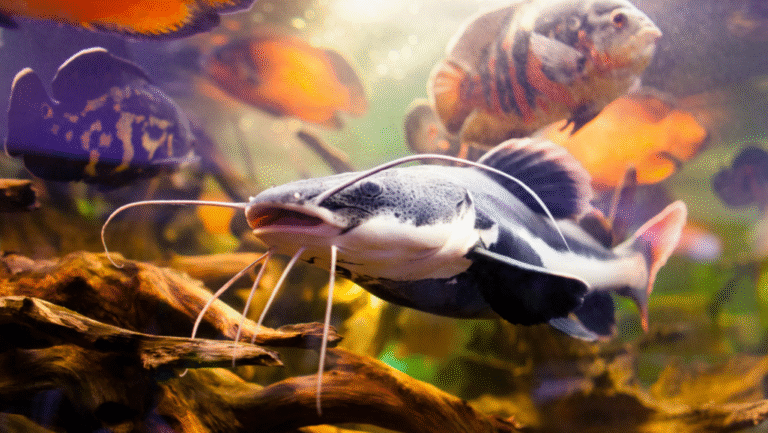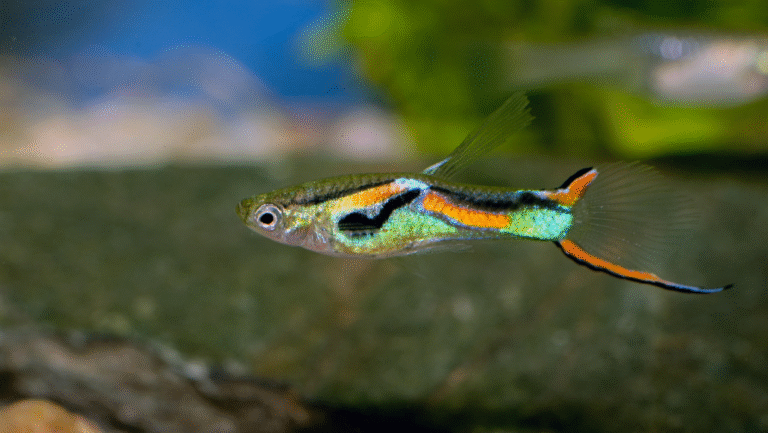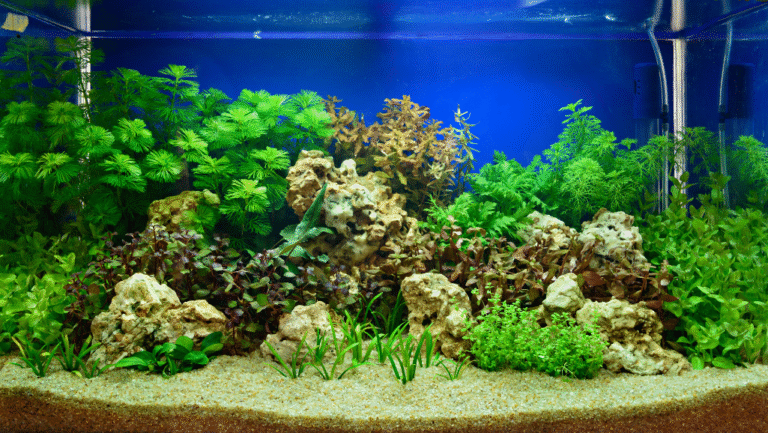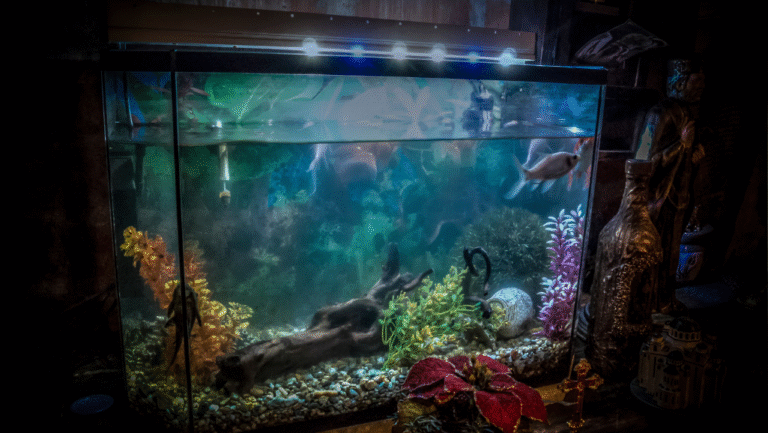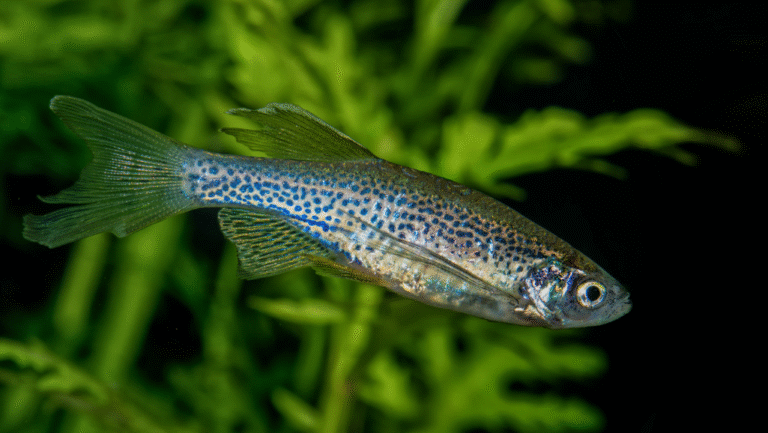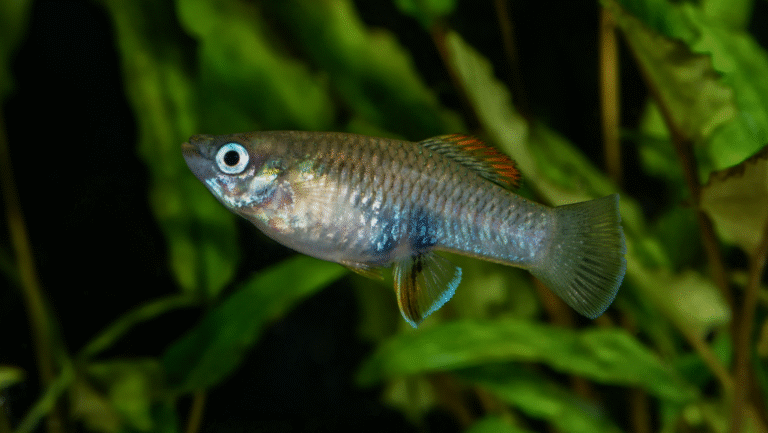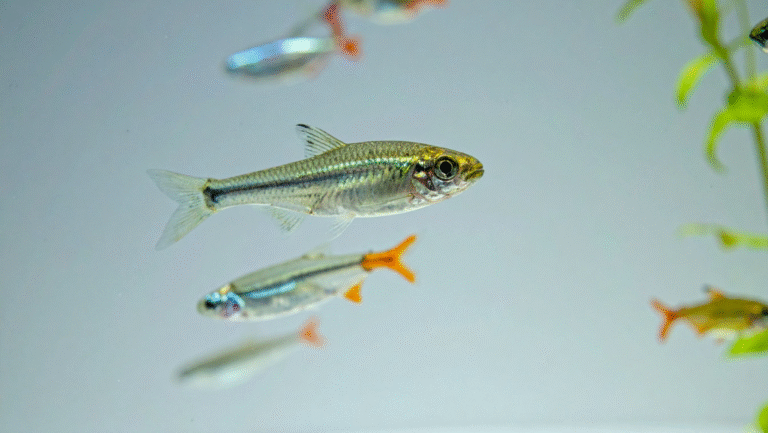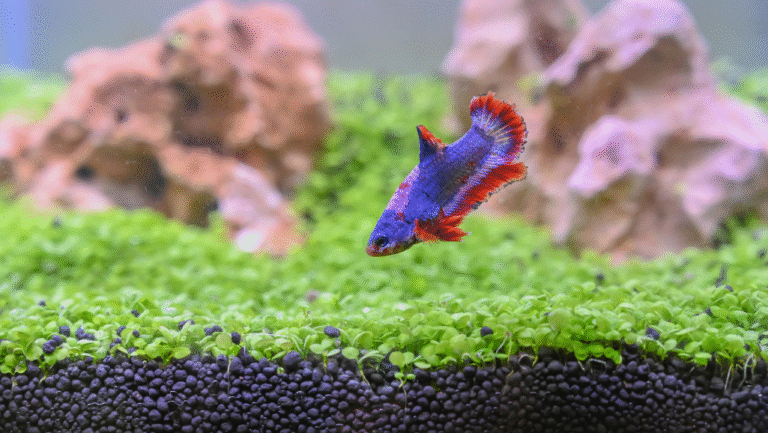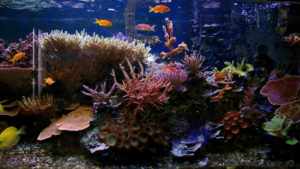Discover a lively, low-stress way to bring motion and color to your home tank. Mollies (Poecilia sp.) are peaceful, hardy live-bearers that thrive as mid-dwellers in community setups.
With simple, steady care, these freshwater favorites flourish in warm water near 75–80°F, higher pH, and mineral-rich conditions. A clean 20+ gallon aquarium and routine maintenance help them live for about five years and show their best behavior.
They accept many omnivore foods and even graze algae, which supports a balanced tank. You can spot males by a gonopodium and females by a fan-shaped anal fin. Their vivid colors — from velvety black to dalmatian and gold dust — make them an inspiring small fish choice for beginners and seasoned keepers alike.
Key Takeaways
- Peaceful community pets: Molly Fish well with other calm species in a 20+ gallon aquarium.
- Simple habitat needs: warm, hard water and stable chemistry support long, healthy lives.
- Natural cleaners: they graze algae and accept varied foods, aiding tank balance.
- Easy sexing: males have a gonopodium; females show a fan-shaped anal fin.
- Vivid colors: a range of hues lets you design an attractive aquascape.
Meet the Molly: Species Basics, Colors, and What Makes Them Ideal
Bright patterns and dramatic fins make these livebearers a joy to watch. Two core species dominate the hobby: Poecilia sphenops (short-fin) and Poecilia latipinna (sailfin). Each species brings a different silhouette and stage presence to your tank.
Short-fin versus sailfin
Short-fin lines show sleek bodies and modest dorsal fins. By contrast, sailfin varieties boast very large dorsal fins, especially in males.
Sexing is simple: males have a gonopodium, while a female shows a fan-shaped anal fin. Males with large dorsal fins often display more during breeding season and attract attention.
Popular varieties and size
Selective breeding created many colors and shapes: solid black, dalmatian, lyretail, gold dust, balloon, albino, marble, and creamsicle.
“Adults typically reach about 3 to 5.5 inches, with sailfin types growing up to 5–6 inches in roomy setups.”
- Pick the right size: choose taller tanks for sailfin mollies and planted lanes for lyretails.
- Consider temperament: males may posture with their dorsal fins; balance groups to reduce stress.
- Mind morphs: balloon-bodied varieties need gentle flow and careful feeding.
How to Set Up a Molly Aquarium the Right Way
The right layout lets active mid-dwellers shine. Choose an aquarium that gives room to cruise: start at 20 gallons, while 29–55 gallons suits larger sailfin forms. Plan open swimming lanes in the center and frame them with hardscape and plants along the sides.
Tank size and layout
Size matters: adults reach roughly 3–5.5 inches, so scale decor and stocking to adult size. Keep taller tanks for sailfin varieties to protect the dorsal fin and allow natural displays.
Essential equipment
Heat to a steady 75–80°F with a reliable heater and thermometer. Pick a filter that supplies smooth, oxygen-rich flow—baffle if the current is too strong. Provide lighting that supports plant growth without pushing runaway algae.
Aquascaping with purpose
Use live plants like water sprite, water wisteria, and Pogostemon stellatus ‘octopus’ to offer shelter and fry cover. Leave some surfaces for a light algae film so mollies can graze between meals.
- Cycle the tank fully and test parameters before visiting a pet store.
- Add stock gradually, observe behavior, and fine-tune flow and scape.
- Design grazing walls and clear lanes to keep a relaxed freshwater community.
Water Parameters That Keep Mollies Thriving
Stable tank chemistry is the unsung hero behind vibrant, long-lived mollies.
Target the sweet spot: keep temperature at 75–80°F, pH between 7.5 and 8.5, and hardness near 15–30 dGH. These settings support color, immunity, and reproduction.
Temperature, pH, and hardness targets
Test often and adjust slowly. Use a reliable liquid kit to check GH, KH, and pH so changes are precise.
Freshwater vs. brackish nuance
Many selectively bred species come from mineral-rich, brackish systems. Moving them straight into very soft freshwater can cause shock.
If your tap water is soft, add mineral supplements such as Wonder Shells or Seachem Equilibrium to raise calcium and magnesium safely.
Preventing “shimmies” and stress
Shimmying is usually environmental stress, not disease. Insulate the tank from drafts, avoid sudden swings, and maintain steady aeration.
“Consistent, mineral-rich water and careful acclimation will help your mollies live about five years and stay active.”
- Acclimate new arrivals from the pet store with a slow drip to match your parameters.
- Pair proper temperature with surface agitation for oxygen-rich water.
- Perform weekly partial changes and routine filter care to keep minerals balanced.
Molly fish Diet and Daily Care
Offer a varied diet and your aquarium will reward you with color and lively behavior.
Omnivore menu: staples and treats
Base the diet on high-quality flakes and pellets that list protein near the top. Add spirulina-rich flakes for color and plant matter, plus blanched spinach or zucchini for fiber.
Feed occasional live or frozen baby brine shrimp to boost conditioning and activity. Rotate offerings so no single food dominates the plate.
Algae grazing: nature’s cleanup crew
Mollies naturally nibble algae and hair algae with their flat mouths. Let a light film grow on decor so grazing becomes a constant snack and helps keep the tank tidy.
Feeding routines and balloon considerations
Offer small portions once or twice daily. Use scatter-feeding so shy tankmates find food. If you see long strings of normal-colored feces, cut portions back.
Balloon morphs need modest rations and close observation to avoid digestive stress.
- Balanced menu: rotate flakes, pellets, greens, and occasional baby shrimp.
- Intentional grazing: encourage algae nibbling for a healthier display.
- Portion control: small meals 1–2 times daily prevent overfeeding.
- Scatter-feed: helps timid companions and evens out feeding.
- Keep clean: remove uneaten veggies after a few hours to protect water quality.
Consistent timing and gentle observation are the simple care habits that keep colors bright and activity high.
Peaceful Community Builders: Stocking Ratios and Tank Mates
Building a peaceful community starts with smart ratios and compatible neighbors. Thoughtful stocking reduces stress and helps every pet look confident and healthy.
Female-heavy groups work best: keep about 2–3 females per male to spread attention and curb harassment. This simple ratio calms social tension and lowers aggression during displays.
- Choose active, peaceful neighbors: pair mollies with tetras, danios, cory catfish, loaches, barbs, and other livebearers for a lively, balanced scene.
- Align water needs: pick tank mates that prefer warm, mineral-rich water so everyone thrives together.
- Protect tiny residents: avoid keeping small invertebrates with larger mollies—shrimp and snails may become snacks.
Avoid mismatch stress: skip slow, long-finned species that can attract nips. Match sizes so curiosity doesn’t become predation or intimidation.
Introduce new arrivals in stages and use plants or hardscape as sight breaks. These small steps help small fish decompress, show natural behavior, and make the community a stunning, serene display.
Breeding Livebearers with Confidence: From Pregnancy to Fry
A confident approach to breeding starts with knowing how to spot sexes and creating safe nurseries for newborns.
Sexing and courtship cues
Sex with certainty: males show a pointed gonopodium while a female has a fan-shaped anal fin. Males often flash larger dorsal fins during courting displays.
Gestation and birth rhythm
These livebearers carry fertilized eggs internally and give live birth every 30–60 days. First-time females may drop a few fry; experienced females can release 50+ at once.
“Expect a steady rhythm: monthly broods are common once adults settle.”
Raising fry successfully
Protect the babies: adults will eat fry, so pack the nursery with dense plants like water sprite, water wisteria, and Pogostemon stellatus ‘octopus’. These plants create safe microhabitats.
- Feed crushed flakes, powdered gel foods, or live baby brine shrimp from day one.
- Consider a grow-out tank or leave fry in a planted display for natural selection.
- With steady warmth and rich food, juveniles reach rehoming size in about 4–9 months.
For practical guidance on livebearing care and to deepen your breeding plan, see this short guide on livebearers.
Conclusion
Set up right, and molly fish bring years of lively display.
Give them space, steady warmth (75–80°F), and mineral-rich water so short-fin Poecilia sphenops and sailfin Poecilia latipinna can thrive. A 20–55 gallon aquarium with dense plants offers shelter for fry and grazing algae to supplement food.
Keep chemistry stable—higher pH and hardness support color, fins, and breeding rhythm. Stock female-heavy groups, feed a varied omnivore diet, and plan a simple fry strategy.
With regular maintenance and minor mineral boosts where tap water is soft, mollies repay careful care with confidence, motion, and striking colors for many rewarding years.
